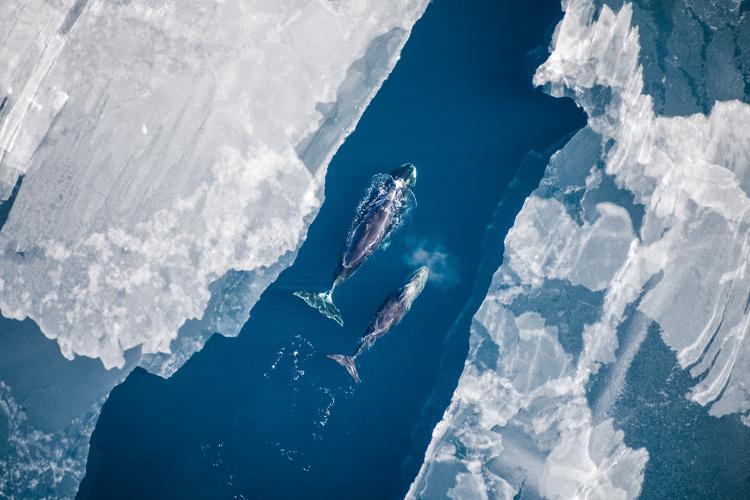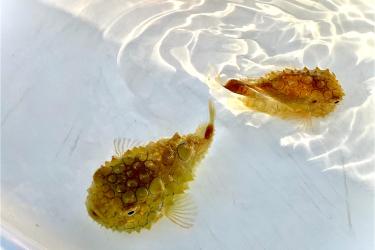Research Focus
ASAMM survey goals are to examine the distribution, relative numbers of animals using certain areas, and behavior of bowhead, gray, humpback, fin, minke, and killer whales, belugas, harbor porpoises, walruses, ice seals, and polar bears. ASAMM surveys are focused in areas of potential interest to petroleum exploration, development, and production, and surrounding areas used by these species, in the Alaskan Arctic. Results from ASAMM surveys provide an objective, broad-scale understanding of marine mammal ecology in the Alaskan Arctic that helps inform management decisions.
In 2017, ASAMM will have one team based in Utqiagvik (formerly Barrow), Alaska, 1 July – 31 October, and one team based in Deadhorse, Alaska, 18 July – 11 October. We’re excited to kick off another survey season seeing bowhead whales and belugas during their annual migration to and from their feeding grounds, gray whales creating mud plumes as they forage on the sea floor, new calves and pups of the season, breaching whales, walruses hauled out on sea ice, polar bears congregated at food sources, and sea ice with bright blue meltwater ponds in the summer and geometric patterns as freeze-up occurs in the fall.
Although some of the animals’ movements and behaviors are quite predictable, we occasionally have species show up in places and times that are completely unexpected. Check back to hear how our surveys are going and see what we’re seeing!
Additional Resources
Meet the Blogger

Amelia Brower is a NOAA Fisheries affiliate with the NOAA Fisheries Alaska Fisheries Science Center through the Joint Institute for the Study of the Atmosphere and Ocean at the University of Washington (UW).
Amelia began working with marine mammals in 2006. She has participated in marine mammal necropsies, seal, sea lion, and fur sea lion rehabilitation and diet and life history studies, bone preservation, monitoring for manatees and other marine life from dredges, oceanographic sampling, small boat surveys for toothed whales off Hawaii, and seal, sea lion, and North Atlantic right whale aerial surveys.
Amelia Brower joined the Aerial Surveys of Arctic Marine Mammals (ASAMM) project in 2009 as a seasonal observer and as a year-round core team member in 2010. Amelia is a team leader during the field season and spends the rest of the year error-checking and analyzing data and photos and assisting with and producing reports, presentations, and scientific publications. Amelia’s work within the ASAMM data has focused on gray whale feeding in the northeastern Chukchi Sea and humpback, fin, and minke whale distribution in the Chukchi Sea. She also serves as the ASAMM polar bear data liaison.


